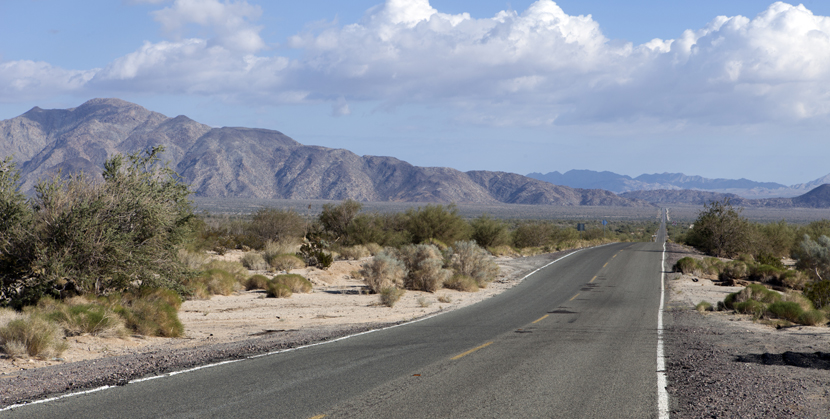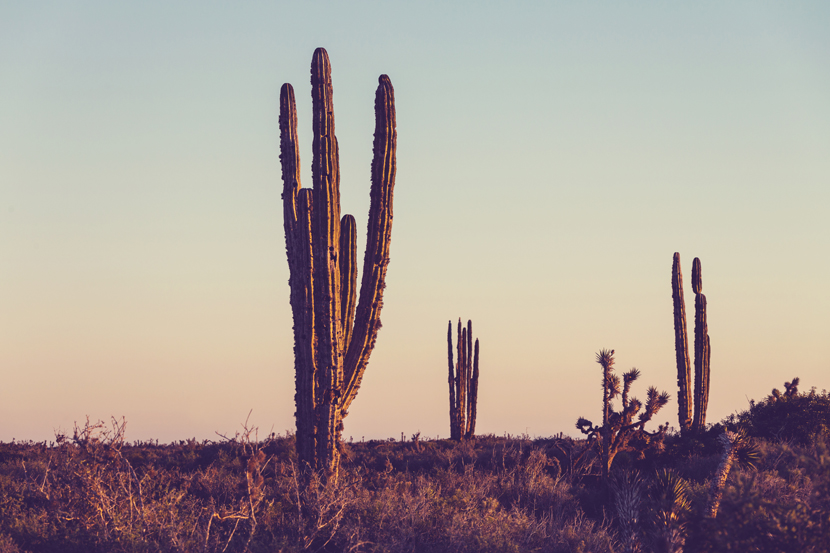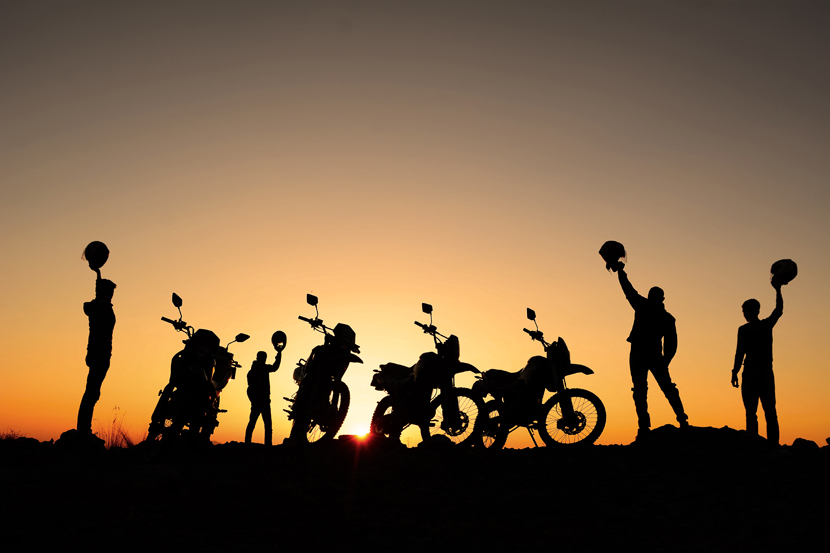Great Escape - Tips for Planning a Baja California Bike Trip
Posted by Team Motorcycle on Jul 10th 2016
|
|
| The Baja California Peninsula. It’s one of North America’s last wild frontiers, a wide-open space that stretches 800 sprawling miles from Mexico’s border with the US to its southernmost tip, which is capped off by the popular tourist town of Cabo San Lucas. |
|
|

|
| For motorcyclists, it is a beautiful place to have that once-in-a-lifetime adventure. Riders can enjoy traveling through miles of deserted country, visit stunning beaches and stay overnight in tiny fishing villages. |
|
|
| Most riders tend to remain on Mexico Highway 1, which is the only road that stretches from the top of the peninsula to its tip. If you want to make the entire journey, you will typically need about four to six days. Of course, the length of time you will need for your itinerary will depend a lot on how much sightseeing you want to pack in our your Baja California adventure. |
|
|
| Before You Go |
|
|
| Before you head south of the border, make sure that your bike is in tip-top condition. If your motorcycle has been giving you any kind of problems, make sure to get those fixed. Also, remember to check that your tires are in good condition. You will also need |
|
|
| Liability insurance – Your United States insurance will not be valid in Mexico. So it is important that you obtain Mexican insurance, which is available online and near the border, for your bike. If you don't have insurance and you get in an accident, you will be asked to prove that you can pay for any damages that you may have inflicted on another vehicle or person. Unfortunately, you could end up in jail if you don’t have insurance or can’t pay for the damages for which you may be considered responsible. |
|
|
| Trip Insurance - You may also want to consider obtaining trip insurance for a Baja Mexico motorcycle journey. Some of these policies will even pay to get you back to the United States for medical treatment, if necessary. Look over various policies before deciding on one, as travel medical insurance coverage can vary greatly. |
|
|
| Proof of ownership – Just in case, you are stopped by the police and they request proof that you truly own your bike. |
|
|
| Tourist Card – You are supposed to acquire this card at the border crossing if you are planning on staying in Mexico for more than 72 hours. The cost in 2015 is $23. |
|
|
| Road map from AAA - This map has up-to-date information on available fuel stops on Highway One. |
|
|
| Passport or passport card. A passport or passport card is now required to enter Mexico. |
|
|
| Best Time of Year to Go |
|
|
| Much of Baja California is covered by desert. So if you prefer cooler weather, you may want to plan your trip for the winter or spring months when daytime temperatures tend to be in the 70s and 80s. Temperatures in the summer can reach the 100s. |
|
|
|
|
|
|
| Do you have an interest in whales? Then you may want to consider planning your trip between the middle of December to the middle of April. This is when gray whales migrate to the quiet lagoons in Baja California to bear their young in the calm, warm waters. This bay is located near Guerrero Negro, which is along the Baja Highway. |
|
|
| To Pack: |
|
|
| When packing, ensure that you don’t go over the maximum weight limit for your bike. In addition, try to distribute the weight you are carrying as evenly as possible on your bike. That way, your bike is less likely to tip over when parked. |
|
|
| Items You Will Want to Pack: |
|
|
| Bathing suits – so you can enjoy a few dips in the ocean. |
|
|
| Rain jacket - even though it rarely rains in Baja California, it's always good to be prepared for inclement weather. |
|
|
| Cipro and diarrhea medication - Montezuma's revenge is always a possibility in Mexico, so it's wise to bring along medications just in case you should come down with a nasty case of tourista. |
|
|
| Sunscreen - if you don't want to end up with a nasty burn, you'll want to apply sunscreen liberally and often. |
|
|
| Lightweight sleeping bag - for those nights when you just want to sleep under the stars by choice or because you can’t find a hotel room. |
|
|
| And if your Baja California trip includes off-roading, make sure to bring the following items: |
|
|
|
Full coverage helmet Off-road goggles, gloves, riding pants. Knee protection Elbow guards Over-the-calf, off-road boots |
|
|
|
|
|
|
| General Tips: |
|
|
| Keep your tank as full as possible. You may not see a gas station for miles. In fact, some riders who have ridden in Baja suggest that you never let your gas tank go below three-quarters full. Why? Because there may be stretches where you might not see a gas station for 200 miles or so. It’s also a possibility that even if you do see a gas station, it may not have gas. To be on the safe side, you might want to consider carrying backup fuel with you. If worse comes to worse, locals sometimes sell gas, which might be of questionable quality, alongside the roads from the back of their trucks. |
|
|
| Plan to stop early as the few accommodations along the way can book up quickly. Plus, you don’t want to be on the road after dark when you’re more likely to hit a creature. Baja California is full of loose animals, such as donkeys and goats. |
|
|
| For the best experience, bring a bike that can go off-road. |
|
|
| Exchange your money. In the bigger cities, such as Ensenada, credit cards and the American dollar will be accepted in many establishments. However, the farther south you travel, the more you’ll need pesos as many of the stores, bars and eateries in the smaller towns only accept cash. In addition, ATMs may not be available in the more rural locations. |
|
|
| Carry your money safely. Use an undershirt wallet to stash the majority of your money and then carry a decoy wallet with a few expired credit cards and some cash. That way, if you should run into an unsavory character demanding your money, you can just hand them the decoy wallet. |
|
|
| Consider a guided tour. On a guided tour, you won’t have to worry about your accommodations or route. In addition, tours will typically offer support vehicles, which can carry your luggage and tools for any repairs. There are even guided dirt bike tours available that will give you a taste of what riders experience during the grueling Baja 500 race. |
|
|
| Make photocopies of your important documents and store them separately from the originals. |
|
|
| Avoid sleeping out in the open in remote areas where you could be an easy target for opportunistic thieves. |
|
|
| A left turn signal in Mexico is sometimes used by a driver to tell another vehicle it is safe to pass on the left. Problems may arise, however, if you are using your turn signal to indicate that you are about to make a left-hand turn, as the other driver on the road may think you’re asking them to pass you on your left. |
|
|
| Carry plenty of water. It’s important to stay well-hydrated on your Baja journey |
|
|
| Keep an eye out for topes (speed bumps), which may not always be well marked. |
|
|
| Keep loved ones informed of your itinerary and check in with them on a regular basis. That way, if your bike should break down or you somehow end up in police custody, the authorities will know where to start looking for you. |
|
|



